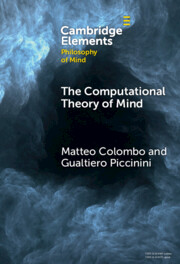Element contents
The Computational Theory of Mind
Published online by Cambridge University Press: 13 November 2023
Summary
- Type
- Element
- Information
- Series: Elements in Philosophy of MindOnline ISBN: 9781009183734Publisher: Cambridge University PressPrint publication: 07 December 2023
References
- 12
- Cited by

